True Alternative: The Top 100 Songs of the ’90s Underground

It was a stupidly ambitious idea, but not an uninspired one. Looking around at the current hotbed of ’90s nostalgia surrounding us, we found ourselves pleasantly filthy in listicles and retrospective pieces on the decade, some of which we’d published ourselves. But we’d noticed that the word “alternative” had been tossed out an awful lot in the past 20-25 years, and we began to question what exactly it meant to be truly underground or alternative in a musical era that we tend to romanticize for being against the grain. We also noticed a healthy resurgence of music we associated with the ’90s—post-hardcore, sludge-metal, trip-hop, house and shoegaze—and sought to re-acquaint ourselves with the inspiration for these aspiring acts.
We’ve been here before—to the ’90s, I mean. In 2008 we published a list of the Best Albums of the 1990s, and we dove deep into the decade’s Top 100 Hip-Hop Albums just two years ago. But this time around we wanted to tackle a more specific question: If some truly oddball music was topping the charts in the ’90s, then what was the underground like? So we set off to create our own left-of-the-dial playlist of sorts, choosing songs that captured our hearts but never quite hit mainstream success for one reason or another. The rules were a means to an end and varied a bit on a song-by-song basis but, generally, these songs didn’t chart well, if at all, at the time of their release. Once we had a massive list of contenders, we got down to voting and whittled them down to a fresh 100. Many of them have grown to be cult classics, but more than a few were lost in history. Some of them are very bizarre. All of them are excellent.
The greatest thing about working on this list was that, even as music writers (many of which very closely identify with ’90s music on a personal level), we all learned something from the experience. We all discovered new favorites, and learned more about some of our old stand-bys. A few of us probably even discovered a new genre or sub-genre, tucked away in the ever-expanding library of Trends That Didn’t Quite Stick. So we hope you’ll read through and discover something for yourself. (And listen along to [most of] the songs on our Spotify playlist.) Because as bold and weird as the ’90s seemed on the surface, there’s a lot more nuance and variation to be heard when the decade’s popular-music landscape is excavated just a bit further.
So, without further hype, here it is: True Alternative—The Top 100 Songs of the ’90s Underground. – ATB
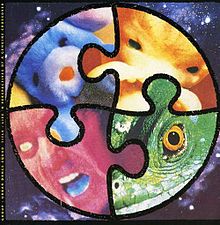 100. Urban Dance Squad – “Bureaucrat of Flaccostreet”
100. Urban Dance Squad – “Bureaucrat of Flaccostreet”
from Life ‘n Perspectives of a Genuine Crossover (1991; Arista)
This Dutch band cracked the U.S. consciousness with Mental Floss for the Globe and “Deeper Shade of Soul” as the 1980s became the 1990s. Second album Life ‘n Perspectives of a Genuine Crossover supplied no proper follow-up—a true shame, because this closing track totally could have served that purpose. Indian sitar, samples of a Hosanna anthem, and an impossibly dense rhythm section (both live and synthesized) support Rudeboy Remmington’s laid-back rhymes and his bandmates’ choral responses. America was unprepared: Urban Dance Squad’s early rap-rock/nu-metal formula, trading notes with Living Colour and presaging the Limp Bizkits to come, was simply in the wrong place at the wrong time. – AB
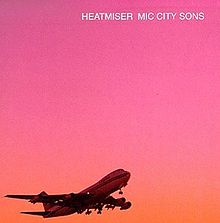 99. Heatmiser – “Pop in G”
99. Heatmiser – “Pop in G”
from Mic City Sons (1996; Caroline)
Heatmiser never wanted to be a grunge band—by their account, they aimed closer to Fugazi, which you can sort of hear in 1994’s “Bastard John.” But as the band’s career began to wind toward an end, singer Elliott Smith began cultivating a sound all his own, inspired more by The Beatles and Alex Chilton than Ian MacKaye. Ultimately the conflict between a loud rock band and a co-frontman that eventually departed to do his own thing yielded, against the odds, the band’s best album. And the best song on Mic City Sons is “Pop in G,” a low-key but still hard-rocking standout that finds Smith sticking to his hushed, lo-fi guns while convincingly playing rock star. It’s got one of the best guitar solos that indie rock has ever known—that the song (and album) barely went noticed at the time is a shame, but Smith’s brief rise ensured its place as a cult classic. – JT
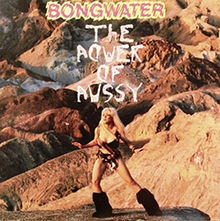 98. Bongwater – “What If?”
98. Bongwater – “What If?”
from The Power of Pussy (1990; Shimmy Disc)
Bongwater’s “What If?” is the result of what might happen if the Beach Boys and the Carpenters went on a binge with Psychic TV while listening to early Frank Zappa. They just don’t make bands like this anymore. Though it can be argued as to whether they were a real band or not, as founder/vocalist/primary songwriter Ann Magnuson also made a living as both a performance artist and actor for the bulk of her music career. She appeared in films like Tank Girl and The Hunger. But, as “What If?” showcases, music as performance art works if you are as committed to the role as Magnuson & Co. were. – WL
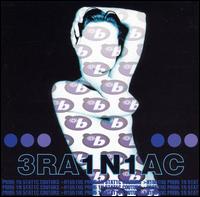 97. Brainiac – “Vincent Come on Down”
97. Brainiac – “Vincent Come on Down”
from Hissing Prigs in Static Couture (1996; Touch & Go)
With their Touch & Go debut Hissing Prigs in Static Couture, Ohio’s Brainiac made the characteristically oddball move of converting characters in song titles to numbers, so this one actually reads “V1NC3NT COM3 ON DOWN.” And that’s the last time I’m typing that. But for as much as the group played with the juxtaposition of synth-based weirdness and guitar-bass-drums rock arrangements, they arrived at their most anthemic moment of new wave weirdness with “Vincent.” At the time, contemporaries like Six Finger Satellite were playing with similar blends of Devo-style jitters and noise-rock power, but Brainiac bolstered it with some beefy production and a charismatic frontman in the late Timmy Taylor. In a sparse underground of outcasts and weirdos, this sing-along schoolyard chant of a punk bruiser sounded like an anthem. – JT
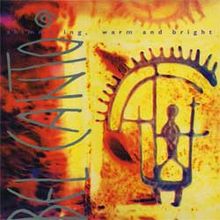 96. Bel Canto – “Unicorn”
96. Bel Canto – “Unicorn”
from Shimmering, Warm and Bright (1992; Crammed Discs)
People might think of Cocteau Twins more readily when the subgenre of “dream pop” is discussed, but it also wouldn’t exist without the work of Norway’s Bel Canto. The oft-hushed musings of Anneli Drecker float over the cinematic synth-driven soundscapes of Nils Johansen—meditative and occasionally haunting. It’s fitting that “Unicorn” is on an album called Shimmering, Warm and Bright, because that perfectly describes the song’s sound. Drum machines guide the synth and acoustic guitar arrangement along as Drecker’s voice ululates about scrolls in caskets and chapels and a unicorn that she wants as her true heavenly companion. Or something. Maybe it’s a dick metaphor. But the lyrical weirdness isn’t a hindrance. Like the work of one of Bel Canto’s spiritual successors, Beach House, this song is the sonic approximation of the times just before sunset on summer evenings, the darkness vaguely off in the distance but not there yet. – LG
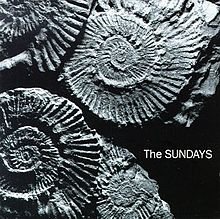 95. The Sundays – “Joy”
95. The Sundays – “Joy”
from Reading, Writing and Arithmetic (1990; Rough Trade)
“Joy” was released on The Sundays’ debut album, Reading, Writing and Arithmetic (the good ol’ three Rs), in January 1990—the absolute beginning of the 1990s (eventually greeting the United States in April, via Geffen Records). With a fresh, gripping sound and yearning vocals to boot, The Sundays were destined to join mainstream alternative ranks. Harriet Wheeler’s vocals feel hopeful but cautious, as she intrigues us with tales about the Lone Ranger and good work ethics. “Joy” is gripping, while still maintaining the melancholic essence that English alternative bands perfected so well. – VC
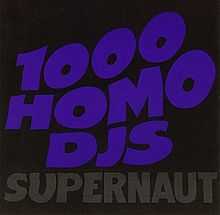 94. 1000 Homo DJs – “Supernaut”
94. 1000 Homo DJs – “Supernaut”
from “Supernaut/Hey Asshole” single (1990; Wax Trax!)
Chicago’s Wax Trax! label was the center of a spiderweb of relationships that helped to evangelize and eventually reshape industrial music. Al Jourgensen connected the most dots by stewarding Ministry from synth-pop shenanigans to aggro metal machine music, then parlaying that effort into a reputation as a go-to collaborator. Revolting Cocks stands as his most successful side project, but 1,000 Homo DJs (full of Ministry and RevCo players, Local H affiliates, and The Dead Kennedys’ Jello Biafra) was his most notorious. This title cut from their lone EP—an almost unintelligible Black Sabbath cover, salvaged by a literal sledgehammer groove and buzzing, squealing production—was nearly litigated into oblivion until Jourgensen replaced Trent Reznor’s uncredited, unauthorized vocal track. Or did he? Rumors linger that Trent sang both versions, with just a few different EQ levels supplying subterfuge. – AB
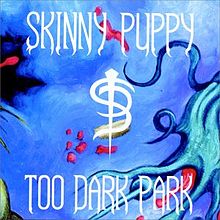 93. Skinny Puppy – “Spasmolytic”
93. Skinny Puppy – “Spasmolytic”
from Too Dark Park (1990; Nettwerk)
“Spasmolytic” was the single off of Too Dark Park, but its video, featuring Ogre acting like a zombie, probably only graced 120 Minutes once or twice. Skinny Puppy were pushing the limits of their industrial rock into much stranger places than the much more popular Nine Inch Nails was putting out at the time. Despite the band’s legendary drug problems, the habit Ogre is singing about kicking isn’t drugs, but eating meat. This song is deliciously dark and grim like all good industrial should be. Looking back, “Spasmolytic” has held up a little bit better than the bigger industrial hit at the time, “Head Like a Hole.” – WL
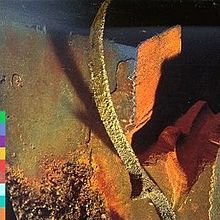 92. Nusrat Fateh Ali Khan – “Mustt Mustt (Lost In His Work)”
92. Nusrat Fateh Ali Khan – “Mustt Mustt (Lost In His Work)”
from Mustt Mustt (1990; Real World)
When Kurt Cobain named Nusrat Fateh Ali Khan as one of his heroes in the early ’90s, it seemed possible that the next 25 years might be the period that allowed for non-Western artists to routinely mingle with homegrown names in the charts. Unfortunately, by and large, that remains a hurdle for the music industry to clear, and household recognition sadly eluded Khan. Nevertheless, the Pakistani Qawwali musician possessed one of the truly outstanding voices of the 20th Century, and made enormous strides in introducing the devotional music of the Sufi people to Western audiences in the 1990s. This track was from a 1990 album of the same name, produced by Brian Eno collaborator Michael Brook, and came at a time when Khan could be found touring North America on a regular basis. Undoubtedly a non-mainstream ’90s gem. – MP
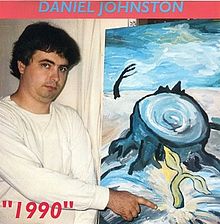 91. Daniel Johnston – “Some Things Last a Long Time”
91. Daniel Johnston – “Some Things Last a Long Time”
from 1990 (1990; Shimmy Disc)
Texas-based singer-songwriter Daniel Johnston’s instrumentals have always been pretty basic and the most positive word one could use to describe his vocal stylings might be “endearing.” But his songwriting—the man’s ability to pair words and melody for a devastatingly emotional result—have always been admirable, to the extent that Johnston is often referred to in terms of “your favorite artist’s favorite artist.” The mid ’90s would grant a short burst of mainstream recognition for Johnston (primarily via Kurt Cobain’s public support of the artist as a major inspiration to him). But, even before then, as early as ’90, Johnston was releasing songs like “Some Things Last a Long Time,” a lo-fi, heart-wrenching ballad with a stripped-down style that would elude to many an indie-rock slow-burner to be released in the decade to come. Is it the best performance on this list? Absolutely not. But the most powerful songwriting? Just maybe. – ATB

Perhaps it’s a perversion on my part but I read a lot of these lists. I say perversion because I often hate this kind of list yet read every one. Most are pretty obvious with just enough off the beaten path selections to make the reader sense a larger depth. This by far is the most thoughtful list I’ve ever read. I know fewer of the track than on any other list I’ve read but the ones I know I love. It makes me want to explore so much music that is new to me, which should be the purpose of every such list. All I can say is Thank You.
The fact that this list is spread out among 10 pages, and not even to flood me with stupid ads like many spam sites do, is absolutely baffling. Excellent list, shame on you for making me click 9 times for nothing. (and by “you” i more mean the admins for this website. I’m sure KC Mars wouldn’t do that to the world)
My bad- KC is a person commenting, not the original publisher.
The most seamless integration of Bob Mould’s Huskers-era merciless guitar attack with his Sugar-era sense of accessibility, with one of his best lyrics to boot. Should’ve been about 50x bigger a hit than it was, but you could say the same about how many dozens of other songs Mould released in his first decade-and-a-half?
No Uncle Tupelo? That essentially negates this as anything that can be taken seriously.
This list seems to willfully omit any act that was once considered a darling of alternative music but then for shame attained any level of broader success….
I agree. What’s wrong with music that people actually like to listen to?
It’s all there in the opening paragraphs. We wanted to highlight some lesser known stuff. No disrespect to any bigger artists of the ’90s, which we certainly enjoy, we just tried something different this time, and ended up with 100 songs that look a little different than your usual ’90s tracks list. Hope you can enjoy it anyway!
I don’t understand the hate – this is an awesome list! An eclectic sample platter of underground 90’s jams – with well-thought out commentary. “Leave it to Kurt Cobain to include mash potato in a song and sound angry doing so” – hilarious.
I grew up in the 90s first learning how to navigate music and find what I loved. This list brought me right back to intravenous childhood. Thanks.